Nova Scotia lobster plant hopes to lead industry in pollution control
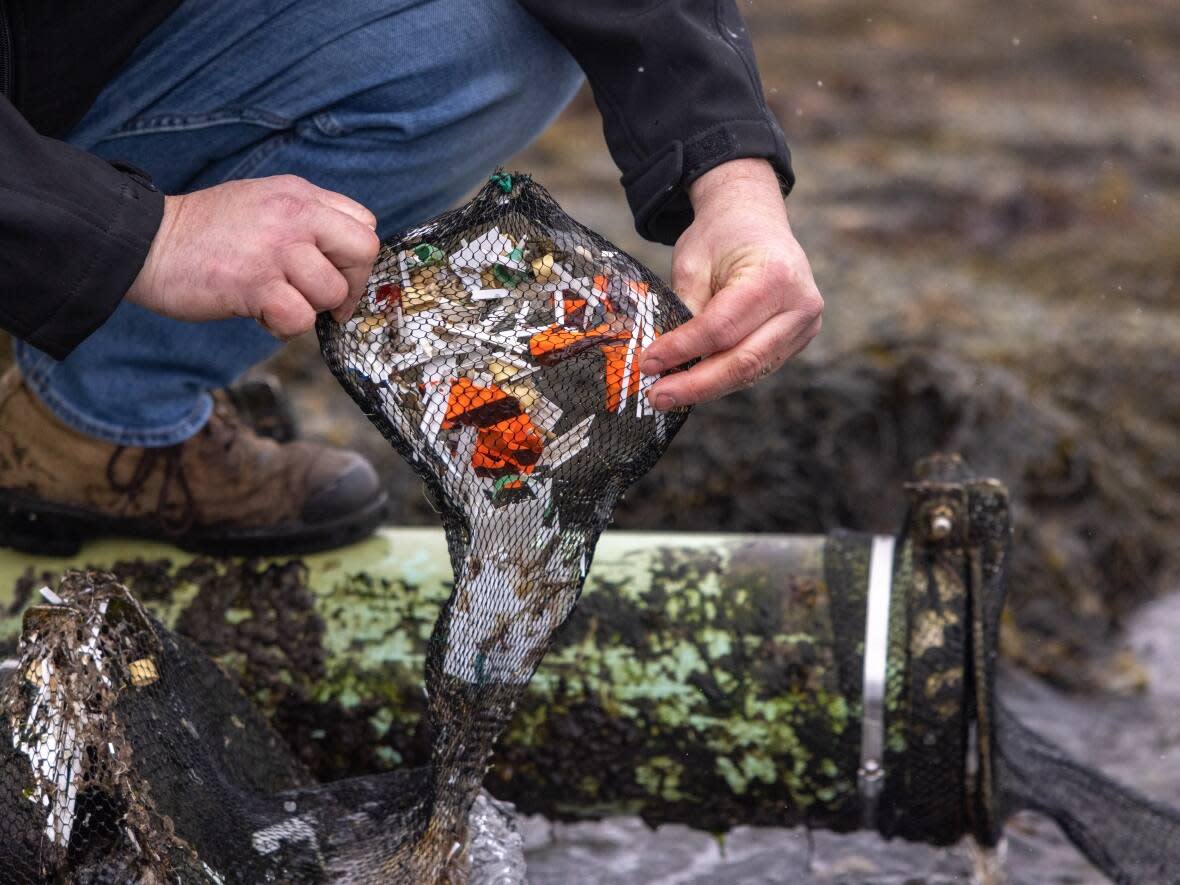
Angela Riley spends most of her days collecting trash from Nova Scotia beaches.
As she combs through rocks and seaweed, she fills her garbage bags with plastics, ropes, glass, and thousands of small rubber bands.
These bands, used in lobster fishing to hold claws closed, are a common find for Riley. She says the problem is getting worse.
"It seems like every shoreline in Nova Scotia tends to have these lobster bands," Riley said. "And if you go down to the Bay of Fundy or southwest Nova Scotia, Northumberland Strait as well, they're just inundated with them.
"When I say thousands or millions, I'm not over-exaggerating. It's crazy."
Riley is the founder of Scotian Shores, a local business dedicated to cleaning the shorelines of the province.
Two months ago, she discovered a large concentration of lobster bands on the beach near the discharge pipes of a lobster processing plant on Cape Sable Island called Atlantic ChiCan Seafood Ltd.
Riley gave the company a call. To her surprise, they were receptive to her concerns.
Since then, a team from the company has implemented ways to control the refuse expelled by the plant. The team has installed screens on the drains and manholes in the plant, and attached homemade pipe socks to the nine discharge pipes that flow into the ocean.
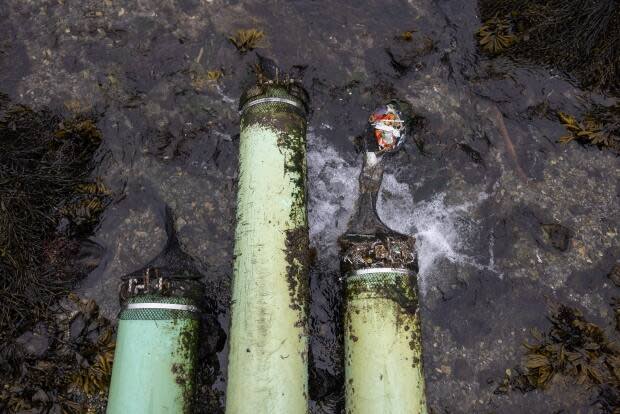
$20 per sock, and 20 minutes to make
Scott Weare, the head of maintenance at the plant, sewed and installed the pipe socks from bait net, and attached them to the pipes with metal clamps from a hardware store.
Weare said commercial pipe socks can be expensive, but his design costs $20 per sock, and 20 minutes to make.
He said the company hopes to be a leader in the industry and inspire others to use the same methods.
"Let's get a jump on the ball and be ahead of it," Weare said. "And then hopefully we can help other people out … you know, hand off our knowledge of what we've come up with to other people."
Since the pipe socks were installed two weeks ago, they have collected a significant amount of garbage that would have slipped past the screens on the inside of the plant.
"A month ago, that little sand beach where we were was flooded with little brown paper tags and rubber bands, and … the big tags," Weare said. "And as we were down there earlier [today], there was very little on that beach."
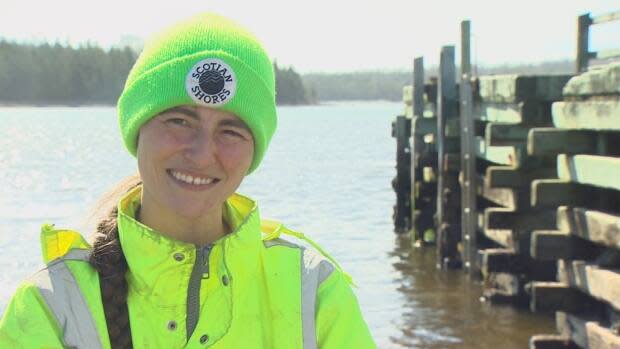
Widespread issue
When she started investigating the bands on shore, Riley assumed they were coming from lobster boats, where they are put on the lobsters.
But as she spoke to people in the industry and tracked the locations with the highest concentrations, she was surprised by what she found.
"I personally actually went lobster fishing one day because I had to find out," Riley said. "[They] took me to a couple of pipes at some processing plants and my jaw hit the ground because they are being flushed out of the processing plants."
She said she isn't blaming every plant, but she has seen multiple instances of bands and plastics coming from discharge pipes on the South Shore and the Bay of Fundy areas, where lobster processing is common.
"I think sometimes what happens is one plant might be like, 'Oh, it's only us. We're only releasing this many.' But then when you go up to the Bay of Fundy and you see the amount that are up there, it's really a combined effort of pollution."
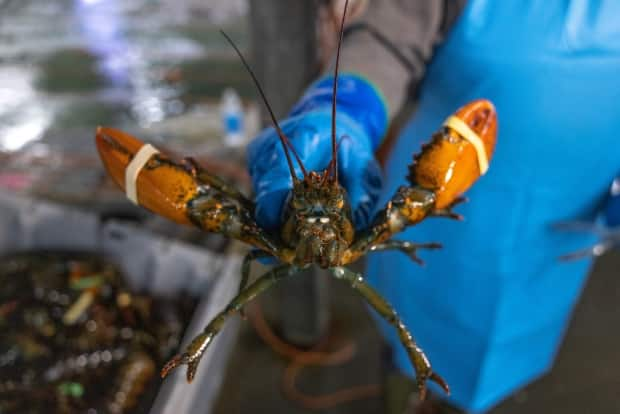
Government response
Riley said she contacted the provincial Department of Environment and Climate Change about the issue, but the department's response was unclear.
In a statement emailed to CBC News, Tracy Barron, a spokesperson for the department, said lobster bands are considered litter from a provincial perspective.
"We have received a complaint recently regarding lobster bands being discharged from a pipe coming from a processing plant," Barron said. "The department has provided the facility with educational materials and contacted the federal agency responsible for regulating these facilities, the Canadian Food Inspection Agency."
When CBC asked the Canadian Food Inspection Agency about the issue, a spokesperson said the agency has inspected all lobster plants in Nova Scotia over the last five years, "however, inspection of litter release falls outside of the CFIA's mandate."
The spokesperson directed the request back to the province.
Department of Fisheries and Aquaculture spokesperson Bruce Nunn said in an email that "a specific provision exists in provincial Fish Inspection Regulations that regulate processing facilities. Those regulations require that the area and beach surrounding and under the control of an establishment shall be kept clean."
Nunn did not answer whether the department has plans to require measures such as pipe socks on discharge pipes to ensure plastics and rubber bands aren't being released into the marine environment.
'Escape artists'
Tony Walker, an associate professor at Dalhousie University's School of Resource and Environmental Studies, said the fact the lobster bands are concentrated around the plants suggests they aren't coming from fishing boats at sea.
"When you get to locations where the density or the number of lobster bands is much higher than the rest of the coastline around Nova Scotia, that would suggest potential for a local source such as a processing plant," Walker said.
Mary Blades, the quality control supervisor at Atlantic ChiCan Seafood and one of the team members, said the bands aren't supposed to come off the lobsters in the processing plant, but they often do.
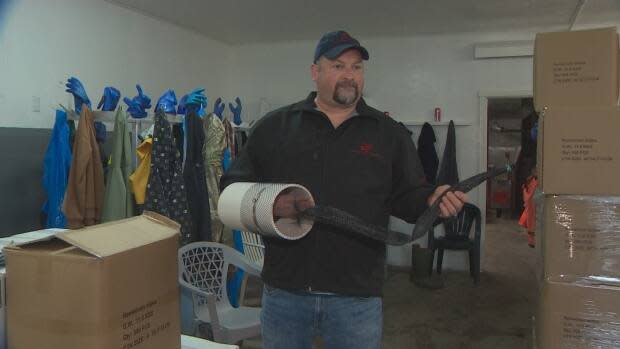
"We store lobsters in the tank with bands on them and sometimes when they come out they don't have bands on them, escape artists," she said.
The bands then end up at the bottom of tanks, which are periodically cleaned and drained into the ocean, or on the floor of the plant, which is hosed down into drains at the end of the day.
Blades said along with bands, the plastic tags attached to storage crates that identify the date and source of the lobsters are also common debris.
"Going in and out of the water, in the currents and stuff, it might take the tags off the crates or whatever and it just sinks to the bottom," Blades said. "And we go through thousands of crates here. So when it comes time to clean your drain, the water and all the garbage that's collected on the bottom goes out through the drain."
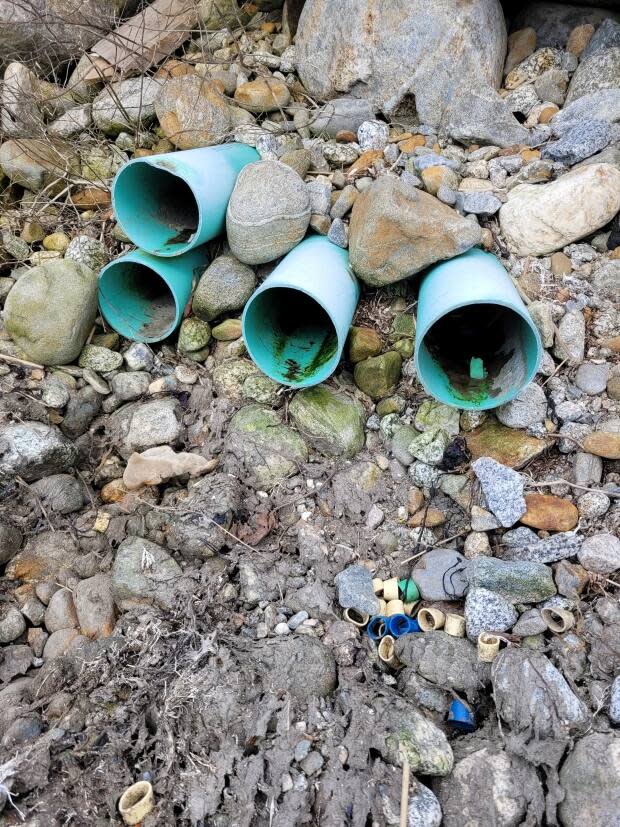
Micro rubber particles
Walker said the fact that these plastics are being expelled by processing plants is concerning.
"Anything which is manmade in the environment, especially the marine environment, should be something to [be concerned] about," he said.
He pointed out that some rubber band manufacturers say their product is "biodegradable," which leads to a common misconception that it doesn't harm the environment. He said in ideal conditions, the bands could take up to 15 years to break down.
"The rubber band itself could be ingested by marine fauna or seabirds, which would prevent ingestion of food so the organisms could still die," Walker said. "Or if the bands continue to degrade and form small particles like microplastics or micro rubber particles … they could also be ingested by even smaller marine organisms."
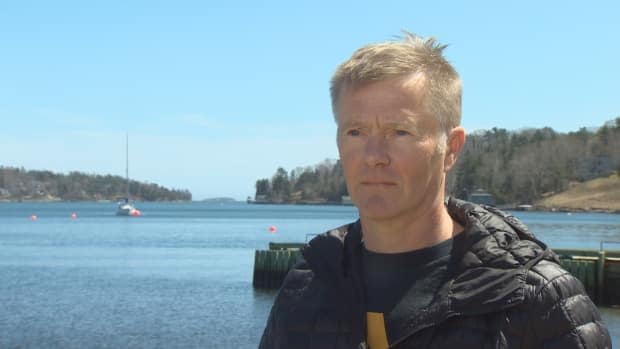
Industry response
In a statement, Geoff Irvine, the Lobster County of Canada's executive director, said he had never heard of the pipe socks, "but it is a great idea and we encourage all sector participants to do their part to lower the amount of waste that finds its way from fishing boats and processing plants."
Blades said she has been working in the lobster industry for more than 20 years and has never heard talk of mitigating pollution at the source until this year.
She said she believes it has taken so long for processing plants to catch on to this issue, because the garbage is "out of sight, out of mind."
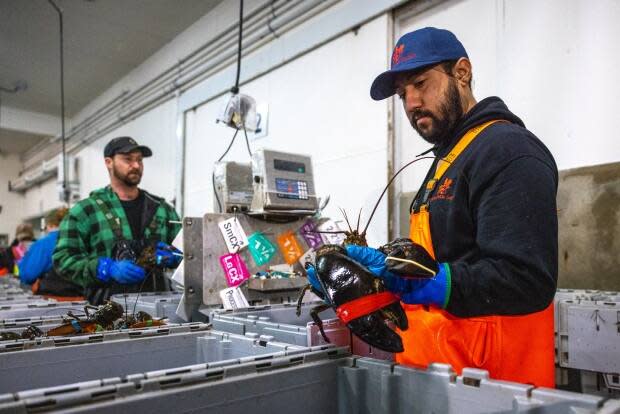
Weare said there are more than 15 fish plants on Cape Sable Island alone, so even starting small with pipe socks in the local area could make a huge difference.
"My wife and I and the family love to go for a walk on the beach. And, you know, we don't want to see elastic bands and tags and everything else … We want to be proud of our beaches.
"I'll gladly make the socks if the guys want to put them on."
Riley said she is happy to see the beginnings of change, and hopes processing plants will take Weare up on his offer.
"I come from a fishing family. I've gone fishing. So I don't want to attack the industry," she said. "I just want us to do better."
MORE TOP STORIES


